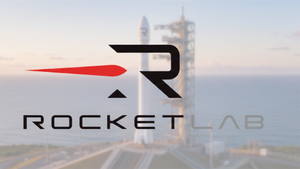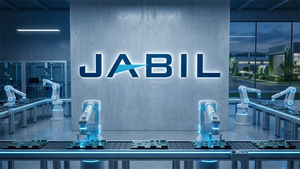
The artificial intelligence landscape is on the cusp of a profound transformation, driven by groundbreaking advancements in photonics technology. As AI models, particularly large language models and generative AI, continue to escalate in complexity and demand for computational power, the energy consumption of data centers has become an increasingly pressing concern. Photonics, the science of harnessing light for computation and data transfer, offers a compelling solution, promising to dramatically reduce AI's environmental footprint and unlock unprecedented levels of efficiency and speed.
This shift towards light-based computing is not merely an incremental improvement but a fundamental paradigm shift, akin to moving beyond the limitations of traditional electronics. From optical generative models that create images in a single light pass to fully integrated photonic processors, these innovations are paving the way for a new era of sustainable AI. The immediate significance lies in addressing the looming "AI recession," where the sheer cost and environmental impact of powering AI could hinder further innovation, and instead charting a course towards a more scalable, accessible, and environmentally responsible future for artificial intelligence.
Technical Brilliance: How Light Outperforms Electrons in AI
The technical underpinnings of photonic AI are as elegant as they are revolutionary, fundamentally differing from the electron-based computation that has dominated the digital age. At its core, photonic AI replaces electrical signals with photons, leveraging light's inherent speed, lack of heat generation, and ability to perform parallel computations without interference.
Optical generative models exemplify this ingenuity. Unlike digital diffusion models that require thousands of iterative steps on power-hungry GPUs, optical generative models can produce novel images in a single optical pass. This is achieved through a hybrid opto-electronic architecture: a shallow digital encoder transforms random noise into "optical generative seeds," which are then projected onto a spatial light modulator (SLM). The encoded light passes through a diffractive optical decoder, synthesizing new images. This process, often utilizing phase encoding, offers superior image quality, diversity, and even built-in privacy through wavelength-specific decoding.
Beyond generative models, other photonic solutions are rapidly advancing. Optical Neural Networks (ONNs) use photonic circuits to perform machine learning tasks, with prototypes demonstrating the potential for two orders of magnitude speed increase and three orders of magnitude reduction in power consumption compared to electronic counterparts. Silicon photonics, a key platform, integrates optical components onto silicon chips, enabling high-speed, energy-efficient data transfer for next-generation AI data centers. Furthermore, 3D optical computing and advanced optical interconnects, like those developed by Oriole Networks, aim to accelerate large language model training by up to 100x while significantly cutting power. These innovations are designed to overcome the "memory wall" and "power wall" bottlenecks that plague electronic systems, where data movement and heat generation limit performance. The initial reactions from the AI research community are a mix of excitement for the potential to overcome these long-standing bottlenecks and a pragmatic understanding of the significant technical, integration, and cost challenges that still need to be addressed before widespread adoption.
Corporate Power Plays: The Race for Photonic AI Dominance
The transformative potential of photonic AI has ignited a fierce competitive race among tech giants and innovative startups, each vying for strategic advantage in the future of energy-efficient computing. The inherent benefits of photonic chips—up to 90% power reduction, lightning-fast speeds, superior thermal management, and massive scalability—are critical for companies grappling with the unsustainable energy demands of modern AI.
NVIDIA (NASDAQ: NVDA), a titan in the GPU market, is heavily investing in silicon photonics and Co-Packaged Optics (CPO) to scale its future "million-scale AI" factories. Collaborating with partners like Lumentum and Coherent, and foundries such as TSMC, NVIDIA aims to integrate high-speed optical interconnects directly into its AI architectures, significantly reducing power consumption in data centers. The company's investment in Scintil Photonics further underscores its commitment to this technology.
Intel (NASDAQ: INTC) sees its robust silicon photonics capabilities as a core strategic asset. The company has integrated its photonic solutions business into its Data Center and Artificial Intelligence division, recently showcasing the industry's first fully integrated optical compute interconnect (OCI) chiplet co-packaged with an Intel CPU. This OCI chiplet can achieve 4 terabits per second bidirectional data transfer with significantly lower power, crucial for scaling AI/ML infrastructure. Intel is also an investor in Ayar Labs, a leader in in-package optical interconnects.
Google (NASDAQ: GOOGL) has been an early mover, with its venture arm GV investing in Lightmatter, a startup focused on all-optical interfaces for AI processors. Google's own research suggests photonic acceleration could drastically reduce the training time and energy consumption for GPT-scale models. Its TPU v4 supercomputer already features a circuit-switched optical interconnect, demonstrating significant performance gains and power efficiency, with optical components accounting for a minimal fraction of system cost and power.
Microsoft (NASDAQ: MSFT) is actively developing analog optical computers, with Microsoft Research unveiling a system capable of 100 times greater efficiency and speed for certain AI inference and optimization problems compared to GPUs. This technology, utilizing microLEDs and photonic sensors, holds immense potential for large language models. Microsoft is also exploring quantum networking with Photonic Inc., integrating these capabilities into its Azure cloud infrastructure.
IBM (NYSE: IBM) is at the forefront of silicon photonics development, particularly with its CPO and polymer optical waveguide (PWG) technology. IBM's research indicates this could speed up data center training by five times and reduce power consumption by over 80%. The company plans to license this technology to chip foundries, positioning itself as a key enabler in the photonic AI ecosystem. This intense corporate activity signals a potential disruption to existing GPU-centric architectures. Companies that successfully integrate photonic AI will gain a critical strategic advantage through reduced operational costs, enhanced performance, and a smaller carbon footprint, enabling the development of more powerful AI models that would be impractical with current electronic hardware.
A New Horizon: Photonics Reshapes the Broader AI Landscape
The advent of photonic AI carries profound implications for the broader artificial intelligence landscape, setting new trends and challenging existing paradigms. Its significance extends beyond mere hardware upgrades, promising to redefine what's possible in AI while addressing critical sustainability concerns.
Photonic AI's inherent advantages—exceptional speed, superior energy efficiency, and massive parallelism—are perfectly aligned with the escalating demands of modern AI. By overcoming the physical limitations of electrons, light-based computing can accelerate AI training and inference, enabling real-time applications in fields like autonomous vehicles, advanced medical imaging, and high-speed telecommunications. It also empowers the growth of Edge AI, allowing real-time decision-making on IoT devices with reduced latency and enhanced data privacy, thereby decentralizing AI's computational burden. Furthermore, photonic interconnects are crucial for building more efficient and scalable data centers, which are the backbone of cloud-based AI services. This technological shift fosters innovation in specialized AI hardware, from photonic neural networks to neuromorphic computing architectures, and could even democratize access to advanced AI by lowering operational costs. Interestingly, AI itself is playing a role in this evolution, with machine learning algorithms optimizing the design and performance of photonic systems.
However, the path to widespread adoption is not without its hurdles. Technical complexity in design and manufacturing, high initial investment costs, and challenges in scaling photonic systems for mass production are significant concerns. The precision of analog optical operations, the "reality gap" between trained models and inference output, and the complexities of hybrid photonic-electronic systems also need careful consideration. Moreover, the relative immaturity of the photonic ecosystem compared to microelectronics, coupled with a scarcity of specific datasets and standardization, presents further challenges.
Comparing photonic AI to previous AI milestones highlights its transformative potential. Historically, AI hardware evolved from general-purpose CPUs to parallel-processing GPUs, and then to specialized TPUs (Tensor Processing Units) developed by Google (NASDAQ: GOOGL). Each step offered significant gains in performance and efficiency for AI workloads. Photonic AI, however, represents a more fundamental shift—a "transistor moment" for photonics. While electronic advancements are hitting physical limits, photonic AI offers a pathway beyond these constraints, promising drastic power reductions (up to 100 times less energy in some tests) and a new paradigm for hardware innovation. It's about moving from electron-based transistors to optical components that manipulate light for computation, leading to all-optical neurons and integrated photonic circuits that can perform complex AI tasks with unprecedented speed and efficiency. This marks a pivotal step towards "post-transistor" computing.
The Road Ahead: Charting the Future of Light-Powered Intelligence
The journey of photonic AI is just beginning, yet its trajectory suggests a future where artificial intelligence operates with unprecedented speed and energy efficiency. Both near-term and long-term developments promise to reshape the technological landscape.
In the near term (1-5 years), we can expect continued robust growth in silicon photonics, particularly with the arrival of 3.2Tbps transceivers by 2026, which will further improve interconnectivity within data centers. Limited commercial deployment of photonic accelerators for inference tasks in cloud environments is anticipated by the same year, offering lower latency and reduced power for demanding large language model queries. Companies like Lightmatter are actively developing full-stack photonic solutions, including programmable interconnects and AI accelerator chips, alongside software layers for seamless integration. The focus will also be on democratizing Photonic Integrated Circuit (PIC) technology through software-programmable photonic processors.
Looking further out (beyond 5 years), photonic AI is poised to become a cornerstone of next-generation computing. Co-packaged optics (CPO) will increasingly replace traditional copper interconnects in multi-rack AI clusters and data centers, enabling massive data throughput with minimal energy loss. We can anticipate advancements in monolithic integration, including quantum dot lasers, and the emergence of programmable photonics and photonic quantum computers. Researchers envision photonic neural networks integrated with photonic sensors performing on-chip AI functions, reducing reliance on cloud servers for AIoT devices. Widespread integration of photonic chips into high-performance computing clusters may become a reality by the late 2020s.
The potential applications are vast and transformative. Photonic AI will continue to revolutionize data centers, cloud computing, and telecommunications (5G, 6G, IoT) by providing high-speed, low-power interconnects. In healthcare, it could enable real-time medical imaging and early diagnosis. For autonomous vehicles, enhanced LiDAR systems will offer more accurate 3D mapping. Edge computing will benefit from real-time data processing on IoT devices, while scientific research, security systems, manufacturing, finance, and robotics will all see significant advancements.
Despite the immense promise, challenges remain. The technical complexity of designing and manufacturing photonic devices, along with integration issues with existing electronic infrastructure, requires significant R&D. Cost barriers, scalability concerns, and the inherent analog nature of some photonic operations (which can impact precision) are also critical hurdles. A robust ecosystem of tools, standardized packaging, and specialized software and algorithms are essential for widespread adoption. Experts, however, remain largely optimistic, predicting that photonic chips are not just an alternative but a necessity for future AI advances. They believe photonics will complement, rather than entirely replace, electronics, delivering functionalities that electronics cannot achieve. The consensus is that "chip-based optics will become a key part of every AI chip we use daily, and optical AI computing is next," leading to ubiquitous integration and real-time learning capabilities.
A Luminous Future: The Enduring Impact of Photonic AI
The advancements in photonics technology represent a pivotal moment in the history of artificial intelligence, heralding a future where AI systems are not only more powerful but also profoundly more sustainable. The core takeaway is clear: by leveraging light instead of electricity, photonic AI offers a compelling solution to the escalating energy demands and performance bottlenecks that threaten to impede the progress of modern AI.
This shift signifies a move into a "post-transistor" era for computing, fundamentally altering how AI models are trained and deployed. Photonic AI's ability to drastically reduce power consumption, provide ultra-high bandwidth with low latency, and efficiently execute core AI operations like matrix multiplication positions it as a critical enabler for the next generation of intelligent systems. It directly addresses the limitations of Moore's Law and the "power wall," ensuring that AI's growth can continue without an unsustainable increase in its carbon footprint.
The long-term impact of photonic AI is set to be transformative. It promises to democratize access to advanced AI capabilities by lowering operational costs, revolutionize data centers by dramatically reducing energy consumption (projected over 50% by 2035), and enable truly real-time AI for autonomous systems, robotics, and edge computing. We can anticipate the emergence of new heterogeneous computing architectures, where photonic co-processors work in synergy with electronic systems, initially as specialized accelerators, and eventually expanding their role. This fundamentally changes the economics and environmental impact of AI, fostering a more sustainable technological future.
In the coming weeks and months, the AI community should closely watch for several key developments. Expect to see further commercialization and broader deployment of first-generation photonic co-processors in specialized high-performance computing and hyperscale data center environments. Breakthroughs in fully integrated photonic processors, capable of performing entire deep neural networks on a single chip, will continue to push the boundaries of efficiency and accuracy. Keep an eye on advancements in training architectures, such as "forward-only propagation," which enhance compatibility with photonic hardware. Crucially, watch for increased industry adoption and strategic partnerships, as major tech players integrate silicon photonics directly into their core infrastructure. The evolution of software and algorithms specifically designed to harness the unique advantages of optics will also be vital, alongside continued research into novel materials and architectures to further optimize performance and power efficiency. The luminous future of AI is being built on light, and its unfolding story promises to be one of the most significant technological narratives of our time.
This content is intended for informational purposes only and represents analysis of current AI developments.
TokenRing AI delivers enterprise-grade solutions for multi-agent AI workflow orchestration, AI-powered development tools, and seamless remote collaboration platforms.
For more information, visit https://www.tokenring.ai/.





